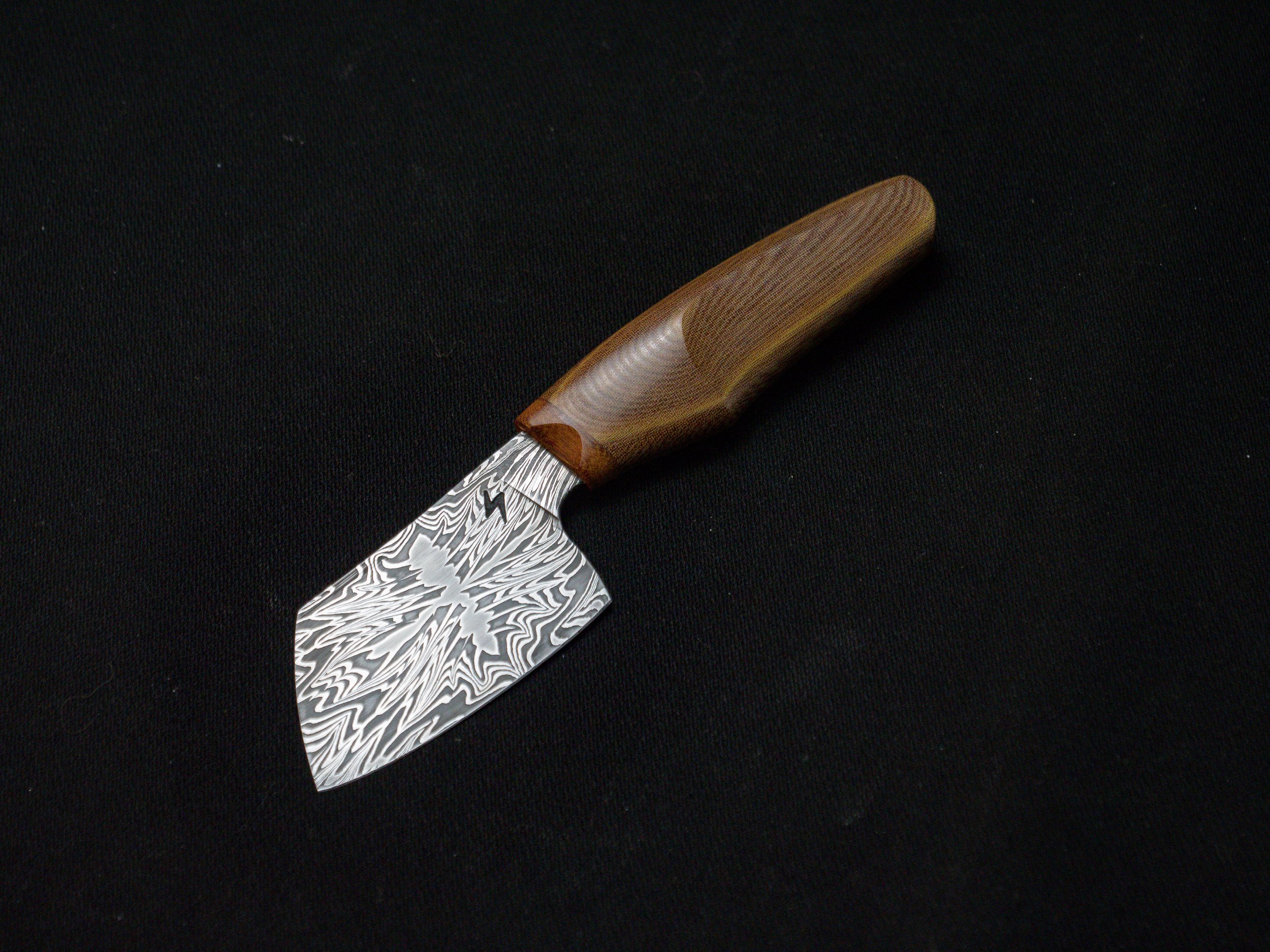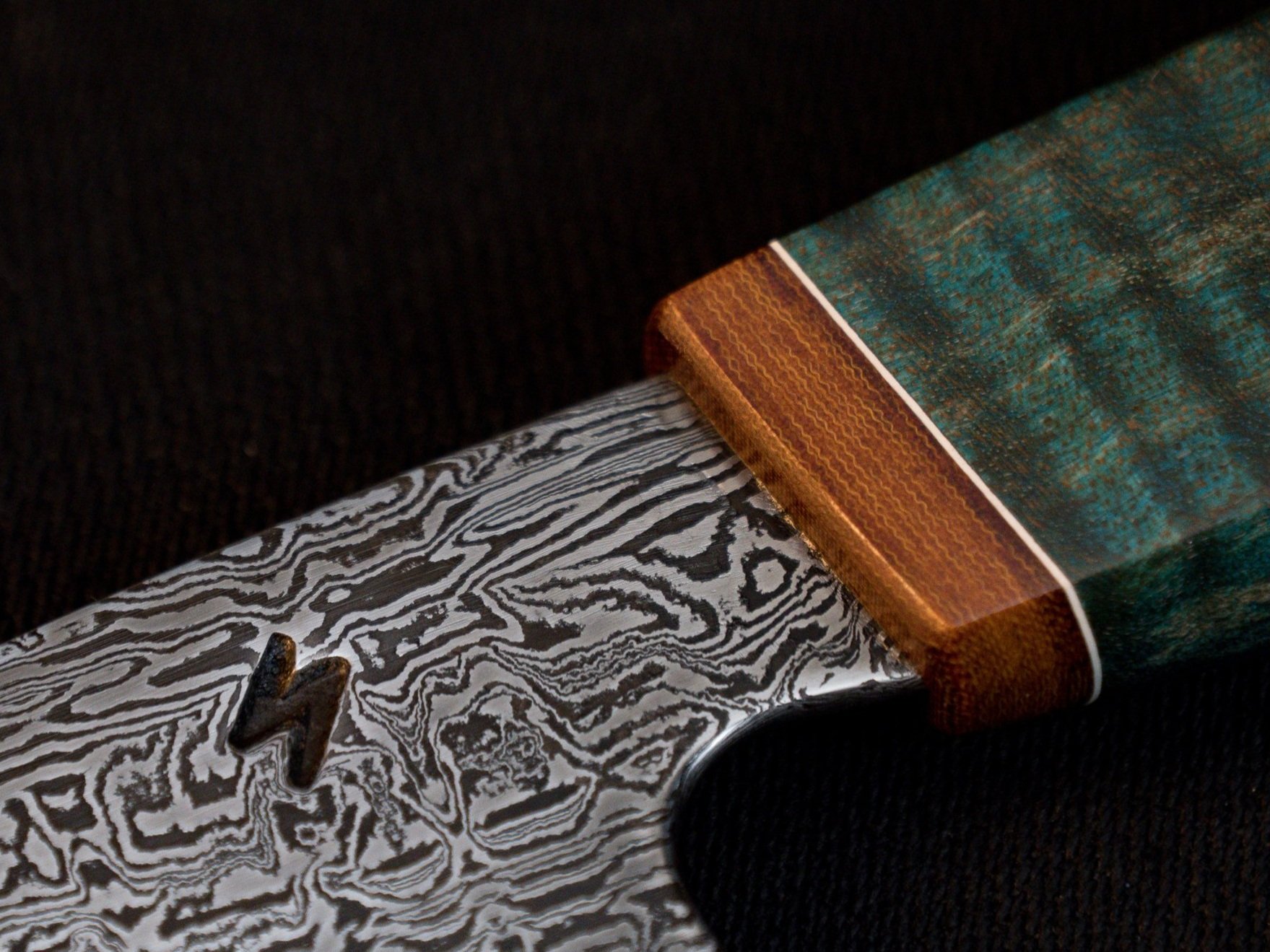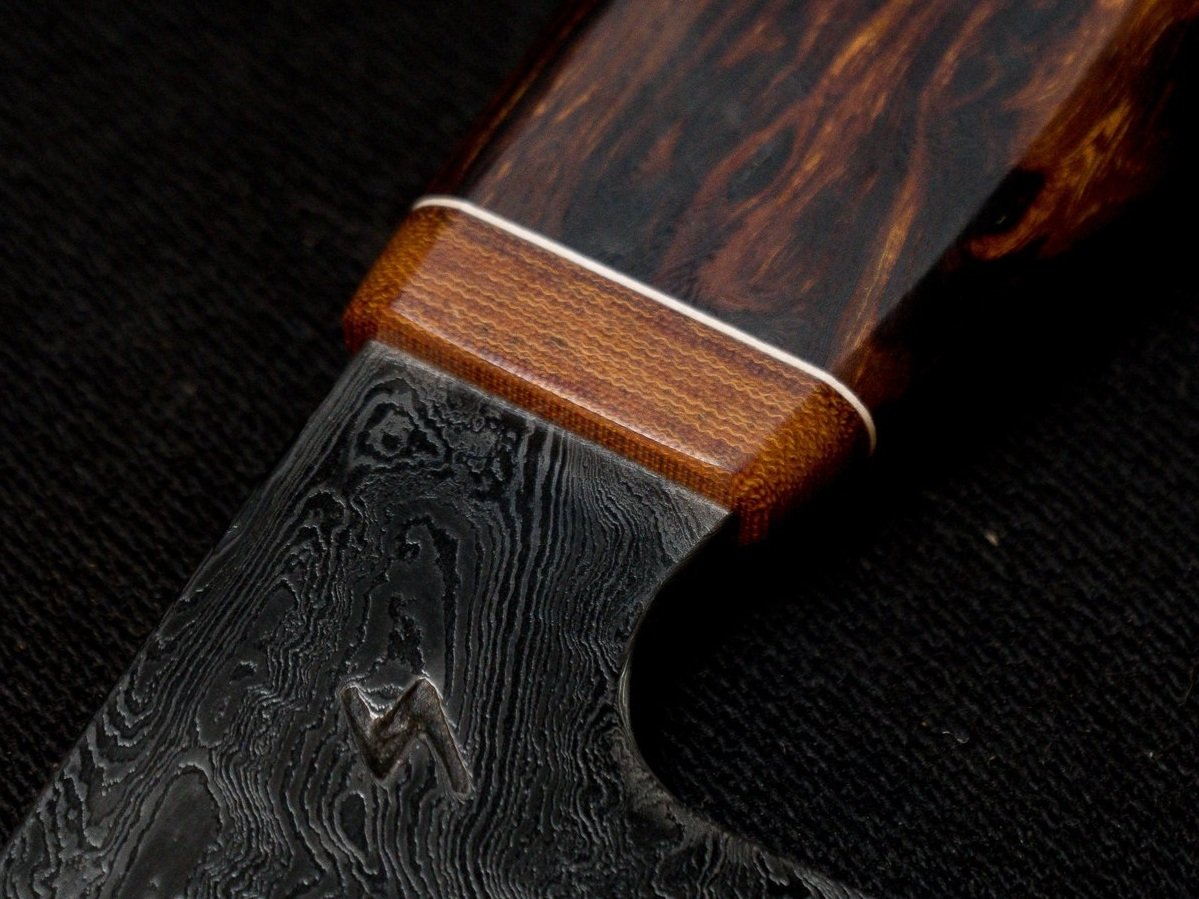Handle Material
There is a vast world of handle material.
This article will be a resource to teach and show the beauty of various handle materials. It will be continually updated over time.
Ironwood: A very popular wood, and for good reason. Grown in southwest United States, especially Arizona, and parts of northern Mexico I believe. Ironwood has such a wide variety of colors and character. It can be one color, have a high contrast of black and gold, or have a variety of colors. It can come in a brilliant gold color, or nearly jet black. Ironwood is very oily and dense, and is considered to be naturally stable. Meaning it won’t change in dimension with changes in moisture, humidity, or temperature. When polished, ironwood shimmers in the light. Pieces that appear to have low character, when buffed will reveal a depth and chatoyance that is spectacular. It is also worth mentioning that ironwood will naturally darken over time.*








Maple: Maple is commonly used in knives and it’s earned its place. It’s an affordable and sustainable handle material. Maple can be dyed and colored easily, making it a fun way to add some color! Maple comes in three varieties, Curly, Burl, and Spalted. Curly maple refers to the visual effect of the wood appearing to be wavy or 3D when it’s flat. Burl refers to irregular grain with eyes and random growth. When a tree dies and begins to rot, it will develop black lines throughout the grain. This wood can be cut, dried and stabilized to show off theses black lines. This effect is known as “Spalted” wood.













Ancient Bog Oak: This is such a cool handle material with a story. Bog Oak refers to an oak tree that dies and falls into a swamp or bog. The tannins in the water natually darken the oak until it’s jet black. It then is astonishingly preserved until the oak tree is pulled out of the bog, dried and stabilized. Its called ancient bog oak because some woods have been dated over 6,000 years old! If you want something clean, classy, not too flashy, but has a story, then Bog Oak is the way to go.





Box Elder Burl: Box Elder burl is a fantastic wood for knife handles, especially if you like color. Box elder is known for accepting dyes very well, and can even be double, or triple dyed to have a multicolor effect. It can often be mistaken for maple burl. It takes a clever eye to discern the two.






Hawaiian Curly Mango: This wood is known for its curl (wavy 3D effect) and its ability to take dye but in an irregular manner. When coloring the wood, parts of it may not take the dye and give some irregular patterns. It looks incredible when dyed with multiple colors or even kept natural. The wood natually has a beautiful bright golden color.





Hawaiian Curly Koa: This wood is a new favorite of mine. As the name suggests it comes from Hawaii. Koa has excellent curl (3D wavy effect). Koa is not a wood to be dyed, because of its beauty in its natural state. Koa has excellent natural coloration and such a depth in the sunlight. Photos just don’t do it justice, you need to see it in person. My koa distributors in Hawaii are very sustainable, and only cut down dead koa trees. It is against the law apparently to cut down living ones, don’t quote me on that however. They are also great about planting new trees and protecting the environment, so you can rest assured that your koa handled knife came from a sustainable source.






Hawaiian curly koa
Western Myall: This naturally stable, dense and oily hardwood comes from Australia. It is known for its rich red and orange colors. It is also known for being naturally curly, and having an incredible 3D illusion to it. It has been known to come in blister/burl figure as well, however the curly figure is more common.


G10: G10 is a synthetic material, composed of fiberglass and resin. It is a very tough, and durable material. It is waterproof, and shock and impact resistant. G10 also comes in about every color you can think of, making it a very popular material. Great for knives that come in contact with a lot of water or the elements. Many of the knives on the market today are made with G10 for those reasons.


Micarta: Similar to G10, Micarta is a material made from compressed fibers and resin. It can come in just about every color you can dream of. Micarta comes in a few different variations. Paper, Linen, and Canvas refer to the material within the resin. Paper Micarta is the finest material used in Micarta. It is often impossible to distinguish the different pieces of paper apart, making it more of a solid color. Linen Micarta is composed of linen, and can be seen easily by the naked eye. It has a fine, wavy, and woven flow to it, that I find lovely. Canvas Micarta could be thought of as one of the “coarsest” materials. Each fiber is noticeably larger than the fibers in a linen micarta, and can be seen from a short distance. Lastly, Micarta is either New or Vintage. It’s pretty self-explanatory. Vintage micartas however are greatly sought after for their “Patina” or “skin”. Vintage micartas have changes in color due to aging and sunlight. These varying shades of colors and signs of aging are quite beautiful. You should see on the edges of the material that it has darkened, and the middle is lighter in tone. This darkened, sun-exposed exterior is referred to as the “Skin”.






